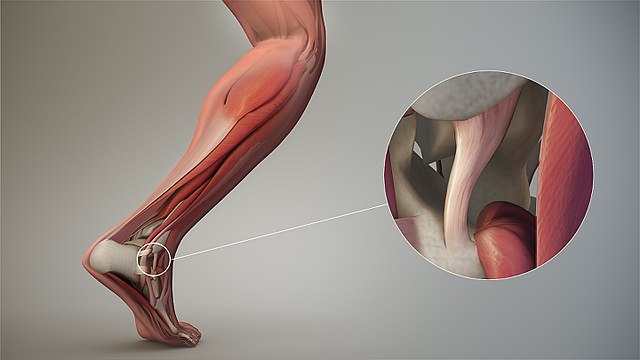A ligament is the fibrous connective tissue that connects bones to other bones. It is also known as articular ligament, articular larua, fibrous ligament, or true ligament. Other ligaments in the body include the:Peritoneal ligament: a fold of peritoneum or other membranes.
Fetal remnant ligament: the remnants of a fetal tubular structure.
Periodontal ligament: a group of fibers that attach the cementum of teeth to the surrounding alveolar bone.
Articular ligament
Hypermobile finger
Connective tissue is one of the four primary types of animal tissue, along with epithelial tissue, muscle tissue, and nervous tissue. It develops mostly from the mesenchyme, derived from the mesoderm, the middle embryonic germ layer. Connective tissue is found in between other tissues everywhere in the body, including the nervous system. The three meninges, membranes that envelop the brain and spinal cord, are composed of connective tissue. Most types of connective tissue consists of three main components: elastic and collagen fibers, ground substance, and cells. Blood, and lymph are classed as specialized fluid connective tissues that do not contain fiber. All are immersed in the body water. The cells of connective tissue include fibroblasts, adipocytes, macrophages, mast cells and leukocytes.
Section of epididymis. Connective tissue (blue) is seen supporting the epithelium (purple)
Hypermobility as a result of an inherited connective tissue defect.



